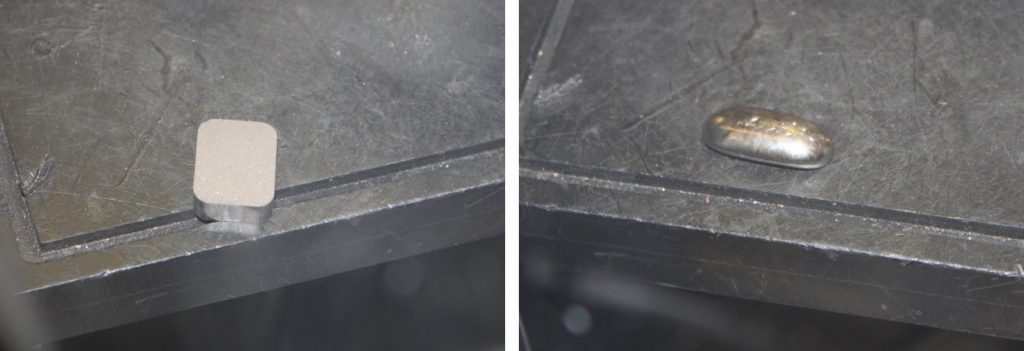In a bid to develop safer nuclear fuel under the DoE’s Technology Commercialization Fund, Idaho National Laboratory has developed an innovative additive manufacturing process for uranium-based feedstocks.
Dubbed Additive Manufacturing as an Alternative Fabrication Technique (AMAFT), the process makes fuel for common light water reactors (LWRs) that constitute approximately 359 of the 449 nuclear reactors around the world.

Safer nuclear power
AMAFT fuses milling, the traditional way of processing uranium ore (yellowcake), with an additive method INL terms “laser shaping”, to produce a reactive core. In tests, the technique has been used to make pellets of uranium silicide (U3Si2).
With greater density and superior thermal conductivity, U3Si2 is a viable alternative to uranium dioxide (UO2) fuels typically used in nuclear power plants. These properties also make U3Si2 more accident resistant.

To make the pellets, lasers create a melt pool, mixing the reactive ingredients of multiple powders, e.g. uranium yellowcake. With this method, scientists are able to reduce the steps it takes to turn raw uranium into a useful material. Isabella Van Rooyen, from INL’s Fuel Design & Development department, explains “AMAFT technology uses a novel hybrid additive manufacturing process, which means we combine some traditional and some additive manufacturing processes to reduce the number of steps – and therefore the time and cost – involved in producing fuel for power reactors.”
In the next step, INL researchers are working to make AMAFT scalable – an essential proponent of commercilization.
Fuel for thought
Elsewhere in 3D printing for energy improvement, the DoE granted the University of Pittsburgh Swanson School of Engineering $1.275 million to develop advanced sensors for use inside nuclear reactors.
Rocket Crafters’ 3D printed rocket fuel also received a patent for use inside its forthcoming solid-liquid hybrid engine.
3D printed energy, aerospace and more stories can all be found in the 3D Printing Industry newsletter, on Facebook and on Twitter.
Register here to find talent and jobs in additive manufacturing.
Featured image shows Idaho National Laboratory’s Advanced Test Reactor (LWR) for nuclear fuels and materials. Photo via INL



